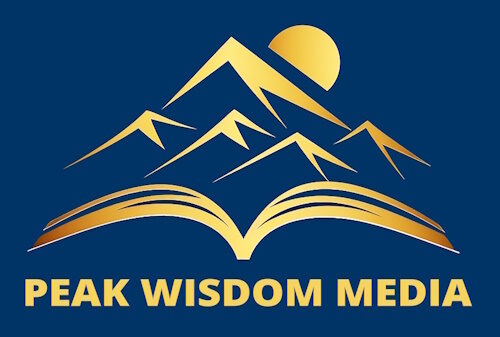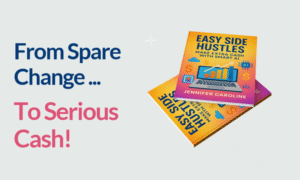The Content Strategy that Doubles Subscribers and Sales in 7 Simple Steps
When I finally created and implemented a content strategy in my own business, it far exceeded my expectations and more than doubled the amount of leads and sales I received from my content marketing efforts.
You’ve probably heard of content strategy before, but what is it really? And how can it save you time and effort?
Your content strategy is the plan you develop for what kind of content you will create, how you will distribute it, and how you will manage it over time.
In other words, it’s a way to make sure that your content is optimized for growth.
When you take the time to develop a content strategy, it can save you months of time and effort. A well-thought-out content strategy will help you focus your energies on creating content that is aligned with your business goals and audience needs.
When done right, a content strategy can help you double your subscribers and sales. Here’s how:
- A content strategy will help you save time.
If you’re constantly creating new content without a plan, you’re wasting time. A content strategy will help you determine what type of content to create, how often to create it, and where to distribute it. This will save you time in the long run.
- A content strategy will help you generate more leads.
Lead generation is all about getting your content in front of the right people. A content strategy will help you identify your target audience and create content that resonates with them. This will help you generate more leads and convert more prospects into customers.
- A content strategy will help you increase your sales.
When you have a plan for your content, you can track its performance and adjust your approach accordingly. This will help you improve your conversion rates and drive more sales.
- A content strategy will help you scale your business.
If you want to scale your business, you need to have a plan for your content. A content strategy will help you create a system for producing and managing your content. This will make it easier to scale your business without sacrificing quality.
Here is my favorite step by step approach to creating your own content strategy:
- Define your business goals.
The first step in creating a content strategy is to define your business goals. What are you trying to achieve with your content? Do you want to increase brand awareness, drive traffic to your website, or generate leads?
For each of your goals, test to find which types of content perform the best for that goal.
For example, some people won’t even know they need your product until you educate them on their problem and how your product solves it. The content you write in this case will be a lot different than if people already know they need a product like yours, and you just need to show them why yours in the best one for them.
- Know your audience.
Another important step in creating a content strategy is to know your audience. Who are you creating content for? What are their needs and interests?
Consider the demographics of your target audience such as age, gender, education and experience.
Create a buyer persona of your idea prospect and then target that person. According to Hubspot, using buyer personas make websites 2 to 5 times more effective as well as improving the user experience.
Find your prospect’s interests, their problems related to your niche and what they are complaining about. Go to sites that sell similar products and see what people say in the reviews, both positive and negative. Check out forums, social media, niche groups and anyplace where your ideal prospect hangs out.
The more you know about your prospect, their problem, their desires and their objections, the better you can craft your own messages.
- Decide what type of content you will create.
Once you know your business goals and audience, you can decide what type of content you will create. Will you create blog posts, video content, or podcasts? What format will your content take? The type of content you create should be based on your business goals and audience needs.
- Choose your platforms.
Find out where your ideal prospects hang out and then reach them where they are.
If your prospects are on Instagram, then that’s where you go. If they are on LinkedIn, then you know where you need to be.
If you’re unsure, you might need to do more research or simply test one platform against another until you find the right fit.
- Create a content calendar.
Once you know what type of content you will create, you can start to develop a content calendar. This will help you plan and schedule your content so that you can stay organized and consistent. A content calendar will also help you measure your success over time.
Ideally you want to take your prospect through a buyer’s journey that results in a sale.
One of the most common buyer’s journeys looks like this:
- They discover your business through social media, a blog or a video
- They join your email list and or visit your site
- They find out more about your product and if it’s right for them. They also look at reviews and ratings.
- They compare your product with your competitor’s product
- They purchase
But if possible, you want your product to be perceived as having no competition at all. This way you will eliminate comparisons with competition, removing that step in the buyer’s journey and getting to the sale that much faster.
- Promote your content.
Promote your content once it’s created. Share it on social media, email it to your list, and make sure it’s easy for people to find. The more people see your content, the more likely it is to achieve your business goals.
Be sure to keep your content updated as well. Old, outdated content is not going to help you and in fact it can even turn people away from you.
- Run a content audit.
This is where you will analyze which content is bringing in the most traffic, which content is converting to the most subscribers and which content is bringing in the most sales.
It’s possible that one piece of content will bring in 1,000 new subscribers but none of them will purchase, while another piece of content will bring in only 100 new subscribers and 7 of those will purchase. It’s important to analyze not just which content brings in the most eyeballs and the most subscribers, but also which pieces result in the most sales over time.
Double down on the content that is converting and stop wasting time with content that isn’t working.
Mediums you could use to share content:
Written content:
- Email Newsletters
- Facebook Groups
- Guest Blogs
- Medium
- Quora
- Website Blogs
Visual Content:
- Imgur
- SlideShare
- Snapchat
- StumbleUpon
Video Content:
- Facebook Watch
- Instagram Reels
- TikTok
- Twitch
- YouTube
Audio Content:
- Apple Podcasts
- Google Podcasts
- Pocket Casts
- Spotify
- Stitcher
- Types of content you could create:
Types of Written Content:
- Articles
- Case Studies
- E-Books
- GIFs
- Guides
- Images
- Infographics
- Memes
- Videos
- Visual Content:
- White Papers
Types of video content:
- Demonstrations
- How-To Guides
- Vlogs
- Webinars
Interactive Content:
- Contests
- Games
- Polls
- Quizzes
Creating a content strategy is worth it because it provides you with clarity and makes it easier to know what kinds of content are going to bring you the greatest return for your time.
Instead of randomly posting odd bits of content as you think of it, you’ll be able to focus on exactly the types of content that do the most work to bring in the most sales.
Learning to build and use my own content strategy more than doubled my sales in a very short amount of time, and it can do that for your business as well.
And a well-thought-out strategy will save you time and effort in the long run and help you create only content that is aligned with your business goals and audience needs.
















